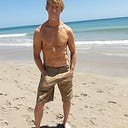There were giants in the earth in those days,…
By Tom Furman
Years ago they labeled a series of exercises for a specific area of the body as a giant set if it was more than three movements. Two movements were super sets. Three were tri sets. So four or more were giants sets.
This is not circuit training per se, which means to string together a series of exercises that covers the entire body. This is more focused. While you may get stronger, strength is not the goal. This has nothing to do with power lifting or Olympic lifting, but using giant sets may have a place in either of those programs.
As well, while load is a variable, density, is the metric. How much work, in terms of work, is done within a certain amount of time. The old time Venice Beach crowd would equate it with, “flushing gallons of blood through the body part”. It’s about efficiency too. You don’t watch TV, text or read the newspaper between sets. There is another exercise to do.
Racing between machines, while dramatic, is not the point. Staying busy, is. Some believe, especially with circuit training, that this method will promote cardiovascular training. That probably has mixed results. Cardiovascular adaptation would be hazy and not truly, “aerobic”. Following is the explanation from Kenneth Jay I often use to illuminate the physiology of lifting weights quickly versus pure aerobic exercise.
“With an increased HR to VO2 relationship it will never be as good as typical cardio exercises. It is simple physiology really. Increased heart rate decreases the time available to fill the left ventricle of the heart, which means that the left ventricle will contain and eject less blood per contraction. This means that the “stretching” of the heart wall, which is necessary to increase your stroke volume and your VO2, does not happen. It’s the Frank-Starling mechanism in full effect and it’s basic cardiorespiratory physiology. Moral of the story: STOP thinking you can ‘get your cardio in’ by lifting weights — no matter how fast you lift them!”
The genesis of this article is from 12 articles I read in 1972 by the then Mr. America, Steve Michalik. He was a phenomena in terms of proportion at that time. Something like a 28 inch waist and 29 inch thighs at his peak. He trained with Jules Levine using a unique methodology. This proceeds his, “Intensity or Insanity Method”, of hundreds of sets and ample drugs. I’ll repeat that again. This proceeds, “Intensity or Insanity”.
The articles were amazingly organized and very different. Steve had some basic ideas that have merit. These are what I can recall —
- Start with three whole body workouts a week.
- Focus on joint movements, at first.
- Use higher reps. Olympic lifters are developed in the thighs, deltoids and erectors. The muscle that bear the brunt of the most reps.
- Based on point 3, upper body 10–15 reps, lower body 15–20 reps.
- Employ methods to increase intensity as you mature. Forced reps, split routines and negatives.
- String together exercises to increase intensity while stimulating different aspects of a muscle group.
A deltoid workout would be side raises, rear raises and seated press behind the neck. Forced reps and negatives were employed. These were done as a series where you could go three times through the sequence.
A leg workout per my memory was, Front Squat, (swami hand position), Hack Squat, Leg Curl, Leg Extension and Leg Press, (vertical machine). That would be 3 times through, 15–20 reps. Do not believe for a second that this was with light weights. At his peak, Michalik would do 22 reps with 1500 pounds in the leg press.
Another resource I remember was Benny “The Beast” Podda. I won’t go into his history, but I remember him training Chuck Norris using a unique methodology. It involved adding an exercise each trip through the giant set.
So let’s take the waistline for example. The exercises could be, crunch, hanging knee up, side bend, hyperextension and plank. The first run would be just the crunch and hanging knee up. Next time through, add the side bend. Next time through, add the hyperextension. Last time through, finish with a plank. The advantage is that you ramp up. As well you get a huge amount of work done. This, again, is not strength based, but density based. Total work done in total time, without sprinting station to station.
Giant sets work well for preventive exercises. They reduce the time and increase the blood flow to the area worked. This makes them efficient and less likely to skip after heavier training.
An example of a post, bench press workout would be —
- Face pull with bands or cable
- Dumbbell lateral raise
- Dislocates with a weighted broomstick
- Go through 3 to 5 times.
An example of a calf workout if you hate calf work —
- Light Farmer’s Walk on your tip toes.
- Seated calf machine
- Standing calf machine
- Dorsi flexion with heels on a step
- Hold a 60 second stretch with your knees locked
- Go through 3 to 5 times.
You can easily see how this applies well to any body part, particularly after the heavier, multiple joint work is done. The best thing is to be creative and be efficient. If you are efficient and the workout takes less time there is a greater chance that you will do it rather than avoid it.
If you have any further questions or need more personalized advice, please contact me for Online Fitness Consultation. physicalstrategies@gmail.com
